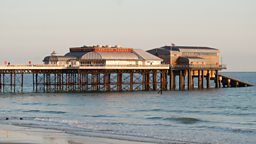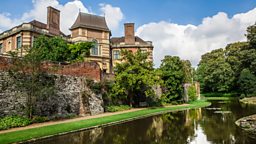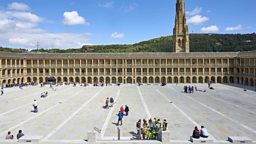 Recently the work of one of the most
remarkable craftsmen has become sought after again. The appreciation
of his work has never wained in the eyes of those who understand the
art of the ceramist but here in England we have for so long
concentrated on some of the work of rather average makers such as
Susie Cooper and Charlotte Rhead. And of course Clarrice Cliff.
Though Charlotte Rhead came from an illustrious family of ceramists.
The Rheads were indeed a skilled bunch. But there is not many who
can compare to the legacy that is left behind by Theodore Deck.
(1823-1891)
Recently the work of one of the most
remarkable craftsmen has become sought after again. The appreciation
of his work has never wained in the eyes of those who understand the
art of the ceramist but here in England we have for so long
concentrated on some of the work of rather average makers such as
Susie Cooper and Charlotte Rhead. And of course Clarrice Cliff.
Though Charlotte Rhead came from an illustrious family of ceramists.
The Rheads were indeed a skilled bunch. But there is not many who
can compare to the legacy that is left behind by Theodore Deck.
(1823-1891) What he did was de-industrialise the
art of the potter running a workshop with around a score of
craftsmen. He was inspired by the middle east and his Persian Ware is
indeed now highly valued. It may not be clear as to the influence ha
had on British ceramics but I see similarities with some of
Burmantofts and by far the most important company in the style of the
middle East Mintons.
What he did was de-industrialise the
art of the potter running a workshop with around a score of
craftsmen. He was inspired by the middle east and his Persian Ware is
indeed now highly valued. It may not be clear as to the influence ha
had on British ceramics but I see similarities with some of
Burmantofts and by far the most important company in the style of the
middle East Mintons.
Deck wrote a book called “La
Faience”. I must get a copy of this book as I am informed by Peter
Hyland that there is detailed technical information.
As a ceramist myself I have a thirst
for the information that potters have or did have in the past. I suck
this knowledge up, but the skill in interpreting the techniques are a
different matter and trial and error is something that I have learned
to take with a rather large dose of patience. Having glaze recipes is
only half of it.
Josiah Wedgwood was a chemist first
and foremost.
Deck's book La Fiaence was read by some
of the best Louis Solon who began at Sevre before moving across the
channel to Mintons, admired his writings.
Fiance the word derives from the town
of Faenza in Northern Italy but Deck thought the word to be clouding
the real historical sense of the fact thet the Persians were making
fiaence long before the Italians. We now see some of this Persian
ware was indeed Turkish, a style now called Iznik. Any type of
earthenware decorated with an enamel or coloured glaze was accepted
as Fiaence at the time
.
Deck was born in Guebwiller in the
Alsace region of France. This was about 12 miles north-west of
Mulhouse at the foot of the Vosges mountains. Mulhouse is the town
where Christopher Dresser died. He will always be known for his
designs for Mintons. His father Richard was a silk dyer. At secondary
school near Belfort Theodore showed a particular love of chemistry.
At 17 in 1840 he was forced to return home to Guebwiller to continue
the family silk dyeing business along with his brother Xavier.
It didn't work out and he left for
Strasbourg where he became a stove-makers apprentice.
Cast Iron stoves covered in ceramic
tiles were commonplace in France and Germany. In the crowded
marketplace the need to make something functional stand out was
paramount to selling ones wares. He learned from his mentor Hugelin
the art of using different coloured clays to inlay tiles. This style
was kown as Saint Porchaire.
He was not to be kept still in the
evenings he studied sculpture with Andre Friedrich.
He recalled how he had been fascinated
by a painted terracotta figure he had seen on a school trip to
Switzerland and when he asked who made it he was told “A potter”.
He must have liked the sound of this.
He went on his own in 1844 at the age
of 21. The art of the stove maker was to travel and show off his work
and he was noticed by manufactures who wished to employ him as he
travelled through Germany learning local skills and styles along the
way.
He made his way to Vienna where he made
large stoves to for the Palace of Schonbrunn. He then went on to
Budapest, Prague, even Berlin.
In 1847 he returned to France and began
to work for Madame Vogt one of the leading stove makers. In 1848 work
stopped at the factory when the Second Republic began. He retrned to
Guebwiller and set up a small atelier to make vases and decorative
objects, oh and stoves. It didnt work out too well for him and in
1851 he returned to Paris where Loius Napoleon had quietened down the
unrest.
Madame Vogt's daughter Madame Dumas was
his next employer where Deck became foreman. The Exposition
Universalle of 1855 saw the Dumas factory exhibiting mosaic tile
panels in many colours.
Mintons also exhibited that year with
their “earthenwares and stonewares enamelled or glazed majolica.
Deck would have seen these. He may also have found out that Minton
had been developing low coloured glazes applied to earthenware body
creating their majolica. Herbert Minton had seen Palissy ware on a
visit to Rouen in 1849. Leon Arnoux had joined Minton in 1849 and
became Art Director.
 In 1856 he ventured out again with the
help of his brother Xavier set up a new atelier at 20, rue
Fontaine-au-Roi relocating to Boulevard Saint Jaques eventually
moving from stove facings to ornamental ceramics and figures.
In 1856 he ventured out again with the
help of his brother Xavier set up a new atelier at 20, rue
Fontaine-au-Roi relocating to Boulevard Saint Jaques eventually
moving from stove facings to ornamental ceramics and figures.
Had that school trip stayed with him all
these years.
The Henry Deux had been mastered by
Deck during his training and it was re-adopted.
The style was based on 16th
century book binding designs. The potter Avisseau also reproduced
this style that was taken up in the 1860's by Charles Toft at Minton.
He showed his creations at the 1861
Salon des Arts et Industries of 1861 and then the London
International Exhibition of 1861. He displayed a copy of a 107cm high
piece that was known to be in the Alhambra Palace in Spain before
1400. This vase is now in the Victoria and Albert Museum, acquired
shortly after.
He was now firmly rooted in the middle
east for his inspiration. Publications were now being made available
showing drawings of Islamaic decorative stylles.
Recuil de dessins pour l'art et
l'industrie by Orientalist Adalbert de Beaumont it was reissued 20
years later in 1859.
Owen Jones Grammar of Ornament would
have been available to him in Paris.
It had reproductions of Arabian
decoration and design.
The 1862 Exhibition saw him well
received.
After moving rue de Vaugirirard in
Paris.
1867 saw the more experienced Deck show
off his technical quality that had been improving all the time.
He now employed trained Paris Salon
artistes we in Britain would be less familiar with these artistes
such as Jean Louis Hamon and Joseph-Victor Ranvier who painted in a
Neo-Grec style. Ranvier would become his chief artist.
Felix Braquemond had worked for Criel
Sevres and Haviland.
The artistic director of Christophle &
Cie known for their gold and silver work, Emile Reiber supplied Deck
with various shapes.
Proceeds from a piece of
“collaboration” was always divided equally between Deck and the
artist. Solon called this an “unprecidented collaboration.”
Solon published The History and
description of Old French Faience in 1903.
In it he accounts Deck tells us the
conditions were far from a sweatshop but were most ideal. He says the
gatherings of artists of the Bohemian persuasion all gathered anxious
to see the results of the last firing.
 The V&A acquired several more
objects and his reputation was growing wildly. His work often showed
semi-clad nymphs some of which show a foretaste of W. S Coleman's
work for Minton.
The V&A acquired several more
objects and his reputation was growing wildly. His work often showed
semi-clad nymphs some of which show a foretaste of W. S Coleman's
work for Minton.
It is not known if the artists
influenced each other but Colin Minton Campbell Director of Minton
appointed Coleman in 1871 and was known to admire Deck's work.
Mintons were exhibitors in the 1867
Paris Exhibition and he purchased some of Deck's work, for his own
collection.
He was offered the chance to half share
(without any capital) in a pottery he planned to build....in Leeds.
Deck preferred to stay in Paris and
declined.
Could this wealthy industrialist be
John Holroyd who in 1863 bought the firm of Wilcox & Co Sanitary
Ware near Leeds and in 1870 expanded the factory to trade as
Burmantofts Pottery.
Burmantofts came close to Decks Persian
ware it is an interesting thought what might have been.
He continued to experiment some of his
shapes were now becoming Chinese in inspiration with naturalistic
designs on white ground. His move into high fired porcelain in 1868
became cost pro-hibitive and were discontinued.
 Deck stood in Municipal elections in
Paris just after the outbreak of the Franco-Prussian War which saw
the siege of Paris. Armistice was signed in 1871 but at this time
Alsace was taken over by Prussia. He decided to stay French as many
Alsatians did.
Deck stood in Municipal elections in
Paris just after the outbreak of the Franco-Prussian War which saw
the siege of Paris. Armistice was signed in 1871 but at this time
Alsace was taken over by Prussia. He decided to stay French as many
Alsatians did.
In 1873 he scored notable success in
Vienna being awarded Medalion d'Honnneur.
This is when Edmond Lachenal was
mentioned prominantly on his stand.
Edmond would go on to found his own
factory. His son Roaul would continue his work through the 30's into
a more geometric style.
Deck now had a shop close to the Grande
Opera on Rue Halevy.
So it was the period we now call
Aesthetic Movement that saw a seed change in styles and inspiration
came from all over the world not just the middle east and new artists
and industrialists were always looking to exploit the prevailing
taste. This melting pot of design was being formed and it is easy to
look back now and talk about it in sequence, but at the time a
movement was in force that could not be stopped and wealth was
available to purchase. History was, literally being made.
It was said in contemporary account
published in the Pottery Gazette that his pottery “stands tranquil
and as silent in its radiant garden as if its gay creations were all
the work of magic”.
Round furnaces were noted and the
Director kept the composition of the green-grey Deck Clay secret.
In La Faience he says he could not give
fixed formula's on Faience body as it depended on locality.
The Gazette reporter was in no doubt
to the overall quality of the enamel, meaning of course the glaze
saying. “Extroadarily lustrous, reflecting the light from every
protruding boss angle, and curve, as if from burnished glass”.
 Deck's love of chemistry enabled him to
write with fluidity but merely reading about it does not give a
craftsman the level of skill he had. You have to do it.
Deck's love of chemistry enabled him to
write with fluidity but merely reading about it does not give a
craftsman the level of skill he had. You have to do it.
All potters should bow down to the
techniques laid down by Deck.
Many of his glaze recipes are printed
in his book but as previously stated that's only half of replicating
his work.
By 1887 many other companies had
formulated their own Persian Blue but it was thought it was derived
from inspiration of Theodore Deck.
Long before I know Le Bleu Deck I knew
Lachenal Blue from my buying trips to France.
I have an unavoidable attraction to
its distinctive velvet sheen. I did not notice so much at first the
patterns of deck mixing these in my mind with traditional Iznik
pieces. I have purchased pieces by Lachenal that may have been from
Deck's own atelier by style.
I do not own La Fiaence yet but the
inspiration from which I choose to write, is from the well
researched account of Deck's work by Peter Hyland for the Northern
Ceramics Society Journal Volume 33.
 Peter writes about Deck's move into
Gold ground inspired by seeing the mosaics in St marks in Venice
where he exhibited in 1873.
Peter writes about Deck's move into
Gold ground inspired by seeing the mosaics in St marks in Venice
where he exhibited in 1873.
He tells us how he mixes glaze and
creates lustre, texture and even the way he applies. Yes if it was
that easy.
The 1880's sees more of his Chinese
ware accompanied by Japanese.
In 1878 Deck was nominated Officier de
la legion d'Honneur.
In 1880 he exhibited a flambe glaze by a
reduction firing.
Sevres were conduction flambe
experiments by official ministry. The Commission de Perfectionment
that had been set up in 1872 described Deck's 20 exhibits as
remarkable and unforgettable.
In 1887 he was offered the post of Art
Director at Sevres on the departure of Charles Lauth at the age of
64. He felt he had to accept even with ill health.
Xavier his brother was entrusted with
the day to day running of production.
Deck, a practical man found it hard to
cope with the tradition and management structure at Sevres. The
aftermath of Lauth's departure saw him caught up in the middle of
politics at Sevres.
He was accused of using his postion to
enhance his own factory, but he stook at it exhibiting his Grosse
Porcelaine in the 1889 Exposition Universalle.
He died in May 1891. His remarkable
brother Xavier continued the business and exhibited at London's
Grafton galleries in 1893, in Paris 1896 and in Brussels 1897, all
with success.
Without Deck's innovation it did not
move with the times into, art Nouveau that cut across Europe at
blistering speed. Xavier died in 1904 and the pottery closed. It was
demolished two years later.
As a national figure Theodore was given
the honour of burial in Montparnasse cemetry where so many of Frances
cultural innovators were buried.
In 2013 he was featured on a postage
stamp.
Decks gravestone was designed by
Auguste Bartholdi, who designed the statue of liberty. It
incorporated faience panels in Deck Bleu and was inscribed 'erpuit
coelo lumen'-translated it reads.
“He snatched the light from the
heavens”.
The headstone was encrusted with a
portrait medallion by Ferdinand Levillian.
There were other potters of course but
they must all acknowledge Theodore Deck.






























